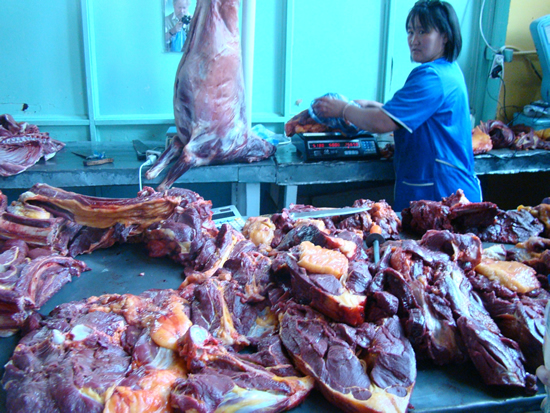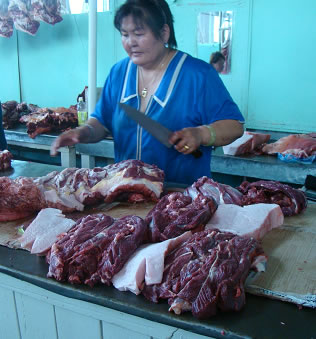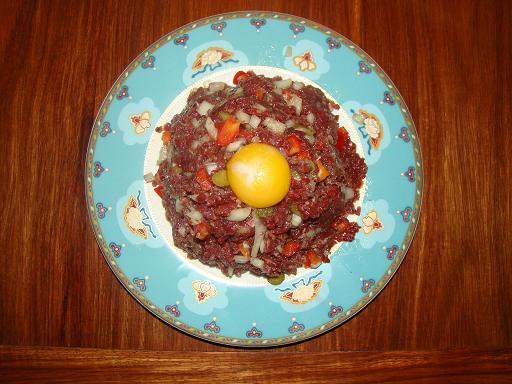
Every year I spend about two months in total in Mongolia. I find it a relaxing ambience compared to the rush and hassles of living and conducting business elsewhere in Asia, which is largely over-populated, polluted and dynamic to a heart palpitating degree. I divide my time there into three-four chunks, I bought an apartment in Ulaan Baatar a couple of years ago and that has developed as my “man-cave†– no feminine touches here I’m afraid. Ibex horns adorn the walls, and my collection of Mongolian, Tibetan and Central Asian art hangs alongside. There’s bear, wolf, and reindeer skins on the floors – you get the drift.
I hang out there then for some peace and quiet, read my books, and listen to music. I write (I’m currently underway with a 2 year project about Central Asia’s deserts) and get into the local pulse of life. I can also ride (years ago, I was good enough to turn out for
Cheshire Polo Club) and the countryside is only a 30 minute jeep drive away. If I want, I can get out much further, and often do – as can be seen at my
Mongolia Expat website.
But on this trip, as I tidy a few things up and get organized for researching my new book (Amazon is great for obscure authors), I’ve been hanging out in the capital, Ulaan Baatar. And that means I also have to either spend a lot of money in restaurants, or cook.
Fortunately, I am sufficiently experienced to allow my good friend Bertrand Petton, GM of Beijing’s Capital Club to describe me as a “Gourmet – and a very fine chef†so I can handle myself catering for guests. You won’t get poisoned at Chateau Chris, and you’re more likely to have a really good feast. But this, of course is Mongolia. Landlocked, and miles from anywhere. I’m a great believer in using the freshest ingredients, and there is no way I’m going to settle for a frozen steak imported from Oz. So, armed with my Mongolian phrase book, I head off to the sprawling Narantuul Zah Market, about 20 minutes from downtown UB.
Here, one can literally buy – anything. From parts of Gers, to heavy duty hardware, clothes – hell there’s even a “Shamen†section where they sell Eagles claws and Vultures feathers – all necessary ingredients for divining the future and creating magic. The American Indians descended from these people, remember.
But I’m looking for meat. Mongolia is not a country for vegetarians, and out on the Steppes, you’ll eat what you find. I am looking for horse meat. Steak Tartar is a favorite dish of mine; however is usually presented made out of beef. In fact Horse meat in many places is still way off the menu and in the United States, banned from human consumption. The last two are a mixture of too many steroids and animal strength antibiotics in the supply chain for the US consumer safety (a telling inditement of Western animal husbandry and food processing industries, plus a mixture of cultural issues) while in Northern Europe, across Asia and even parts of Latin America horse meat is regarded as a delicacy. However, the original Steak Tartar was made from horse meat and not beef. Apparently it was introduced to Europe by the Golden Horde, where the habit of consuming horse took root mainly in Eastern Europe, Russia and France, but only the latter have the sufficient galle (pun intended) to eat it raw. And that is my mission. Horse meat steak tartar. The French even have their own breeds of horse specifically reared for consumption – the
Ardennes Horse is bred not just for work but also for food. The name of the dish itself is the give away – the invading Mongolians rampaging through Europe were known as Tartars.
Back at the market, spotting Horse meat is relatively easy. Amongst all the butchers selling beef, pig and chicken, horse meat is easily identifiable by its rather curious hue – it has an orangey tone to it, and especially the fat.

Horse meat butcher.
It needs to be fresh of course, and the best way to tell that is to give it a sniff – it’s gamey, and looks good. I buy a kilo. Another stall however is selling another Central Asia delicacy – Camel. Camel butchers can be identified because the meat is sold together with chunks of white porous fat – actually the dismembered hump. That’s a good sign of quality (it needs to be white) and in the harsh winter conditions of Central Asia, locals need to acquire a decent amount to survive. The secret to camel meat is the quality of the beast as it dies – camels release a lot of hormones if they are stressed, and this makes the meat tough. The beast should have been killed quickly and humanely. I smell it, and it too is good, I buy another kilo.

Camel meat butcher. The white meat is the hump fat.
Back at home, I cut most of the meat into cubes, and decide to marinade them both. I know that both meats are full of flavor and concoct a marinade of chopped onion, salt, pepper, a couple of sprigs of wild thyme (it grows all over Mongolia, you can literally just walk out and pick bunches of the herb) with a dash of cayenne pepper and a decent few slugs of red wine. I leave them for three days to fully marinade. (I later slow cook them, and serve with boiled potatoes. They were delicious).
For the Steak Tartar, this needs to be made when you are ready to eat it. I mince about a ¼ kilo, then put in a bowl, add salt, ground pepper, chopped onion, half a chopped red capsicum, and a dash of lemon juice. I splash over some olive oil and mix it all together by hand. I put it back in the fridge for half an hour, mould it into a volcano shape, make an indentation on the top, and place a whole raw egg yolk in the centre. Then, armed with a glass of Hungarian red wine, I tuck in. Ladies and Gentlemen, I can now proclaim that the only way to eat Steak Tartar is to use Horse Meat. And if you have the option, follow the French and the Mongolians, because they really know what they’re doing when it comes to such choices.

Mongolian Horse Meat Steak Tartar, courtesy Chef Devonshire-Ellis

